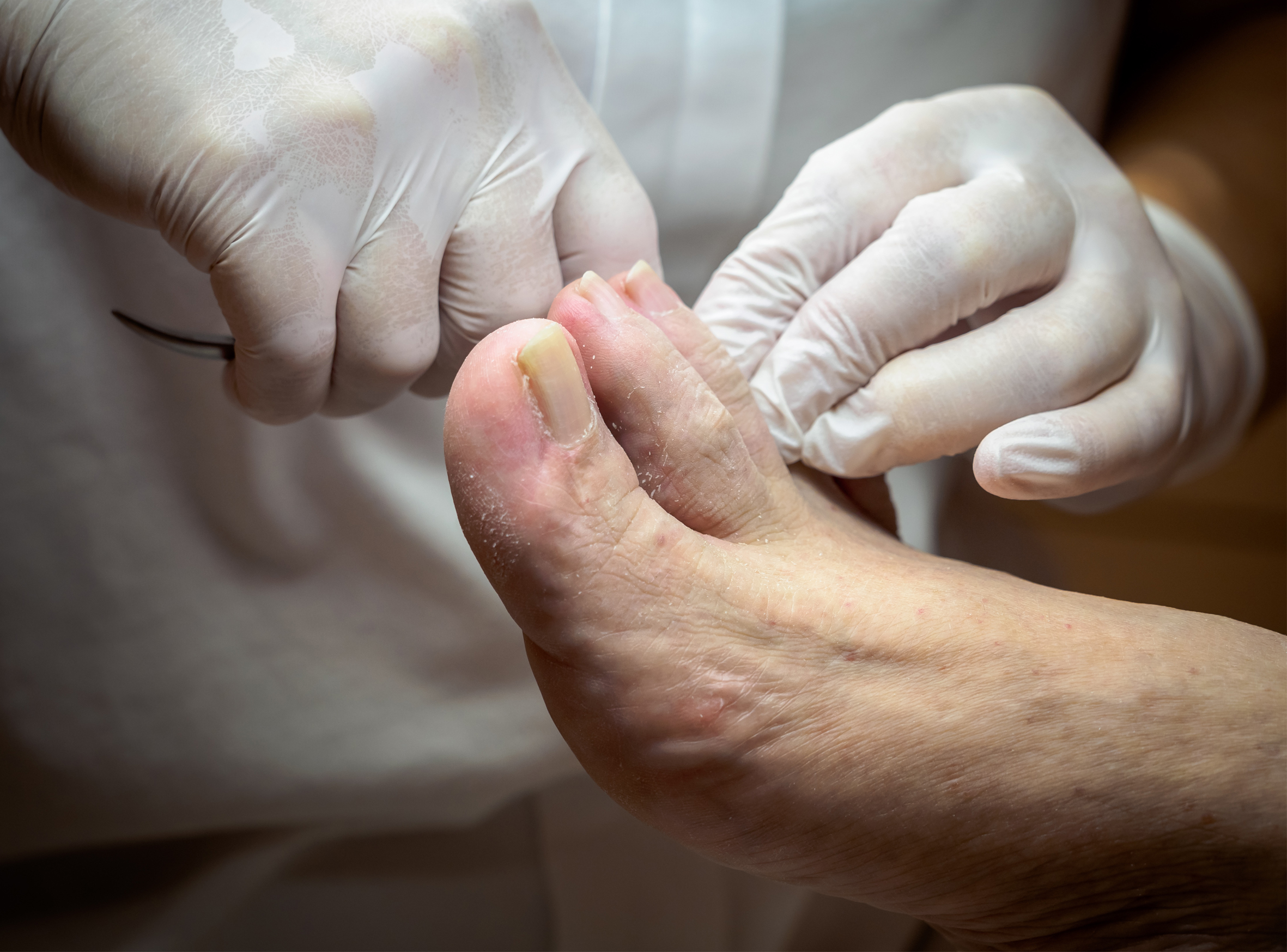Diabetes foot care is necessary on a daily basis to keep your feet healthy for the long term. Diabetes increases the chances of developing problems in your feet. In fact diabetes symptoms can show up in your feet first. Common problems are peripheral neuropathy which is essentially nerve damage, or peripheral vascular disease which is poor circulation.
Both conditions lead to problems such as a delay in the natural healing process, and an inability to feel pressure or pain creating numbness in the feet and toes. This can lead to infections, ulcerations and potentially amputations if not treated in time.
Daily diabetes foot care at home and regular podiatry treatments are highly recommended if you have diabetes. Preventive treatments are paramount to keeping your feet healthy for the long term.
Signs and symptoms of feet problems from diabetes
Nerve damage – diabetes causes nerve damage to your feet so that you stop feeling pressure and pain. If you hurt your foot and break the skin, you may not even realise you have a sore to treat, leading to further complications. Be mindful of the following symptoms:
- Tingling sensation in the feet (pins and needles)
- Numbness in feet or toes
- Legs feel cold
- Legs and feet have burning pain
Reduced blood supply – diabetes causes less blood supply to the feet resulting in an increased incidence of infections and ulcerations. With less blood supply, cuts and sores take longer to heal, infections and ulcerations may linger, and this can lead to amputation. Here are symptoms of reduced blood supply:
- Sharp pains in your legs after walking
- Changes to feet colour such as redder skin
- Feet feel cold
- Pain in your feet even after resting
- Cuts and sores are slow to heal
What you can do at home to care for your feet – daily
By giving your feet some well earned care on a daily basis, you will minimise or prevent foot complication due to diabetes.
- Wash and dry your feet every day
- Make sure you dry well between your toes
- Moisturise your feet every day to avoid dry skin that can crack and cause open sores
- Check your feet every day for changes – between toes, around the toenails and the heels, look for cuts, redness or swelling
- Keep your toenails trimmed straight across or have them managed by a podiatrist
- Wear well fitted socks and shoes – not tight as these will exacerbate problems
- Avoid direct heat on your feet such as heaters, hot water bottles and electric blankets
- Avoid smoking and keep physically active
- If you get a cut, sore or any sort of open wound, immediately attend to it. Wash and dry the area, apply antiseptic and wrap with a sterile bandage. If it lingers the following day, see your GP.
Why see a podiatrist if you have diabetes?
Regular podiatry will help look after your feet and maintain them for optimal health. We recommend regular podiatry check-ups at least once a year. Also, for corns and callouses we do not recommend over-the-counter medications. Please make an appointment with us and we will treat the problem for good long term health.
During a podiatry session we will assess the following and treat where necessary:
- Redness and swelling
- Ulcerations or sores
- Skin texture and condition
- Cracked heels or dry skin
- Nerve damage and pain
- Pain in the feet or legs
- Toenail check, maintenance and trimming
Prevention is always better than cure when it comes to your feet.
Make an Appointment with Sanders Podiatry – Adelaide, Stirling, Mount Barker
The experienced team at Sanders Podiatry will help keep your feet healthy. Our gentle and understanding holistic approach and sound advice will give you the knowledge and confidence to continue caring for your feet at home, managing diabetes and minimising further complications.
We have podiatry clinics throughout Adelaide and the Adelaide Hills.
Contact us at the following locations:
Sander Podiatry Adelaide – 08 8379 1456 (Greenhill Podiatry)
